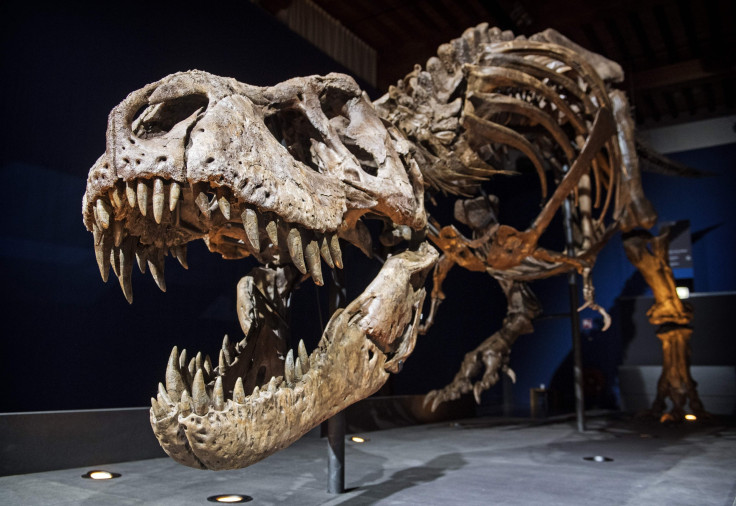T. Rex May Have Used Its Tiny Arms For 'Vicious Slashing' of Prey

For many, the name Tyrannosaurus rex (T. rex) is synonymous with the phrase apex predator. No creature has set off adrenaline explosions in the brain quite like the fearsome beast. It has managed to terrify people thousands of years after its extinction and this is proof enough of the dinosaur’s ferocity.
But every beast has a chink in its armor. The T. rex’s small and funny-looking arms are the butt of many jokes until people glance up into the eyes of the animated dinosaur only to feel a very Steven Spielberg-esque excited chill running down their spine.
These disproportionate mini-arms were often seen as appendages which visibly did not serve any purpose and were considered to be evolutionary vestiges. The giant head with razor-sharp teeth and immensely powerful hind-legs contained enough power for the T. rex to hunt. But, latest studies show T. rex’s tiny arms were functional killing machines too.
A new paper presented recently at the annual conference of the Geological Society of America and published in the journal of Geological Society of America, suggests the arms' short length and reach would have actually been an asset when dealing with prey at close quarters.
“T. rex’s 1 metre long forelimbs may have been miniature in relation to the rest of this towering carnivore, but they could still have been adapted for ‘vicious slashing’ of cornered prey,” said Steven Stanley, paleontologist at the University of Hawaii at Manoa and lead author of the study.
"Its short, strong forelimbs and large claws would have permitted T. rex, whether mounted on a victim's back or grasping it with its jaws, to inflict four gashes a metre or more long and several centimetres deep within a few seconds…and it could have repeated this multiple times in rapid succession," Stanley said in a report in Science Alert.
Stanley and his team came to the conclusion based on the arms' strength and robustness. They studied the bones that make the limbs and the dinosaur's large coracoids, which is a bone paired to the shoulder and helps control arm movement.
T. rex had just two claws on each forelimb, which points to an increased slashing power. Each claw could mathematically exert up to 50 percent more pressure in clawing and slashing compared to the three-clawed theropods. This also led the team to believe the T. rex actually used their arms.
According to the study, "these huge, sickle-shaped extensions would have caused deep wounds in any prey they carved through, which could be considered more evidence that the arms as a whole weren't an evolutionary remnant.”
"I would expect it could cause some decent damage if it struck, but in order to deploy [the arm], Tyrannosaurus would basically have to push its chest up against the side of the victim," paleontologist Thomas Holtz from the University of Maryland, who wasn't involved with the research, told National Geographic .
Younger specimens could have made more use of the slashing maneuver, Holtz added.
"It might be that the arms were actually more functional in young T. rex, and became reduced in function as it became older," Holtz said. "The strike zone would be proportionately larger in a young T. rex — and going after smaller prey would mean the force required to kill the victim would be less," he added.
© Copyright IBTimes 2024. All rights reserved.





















